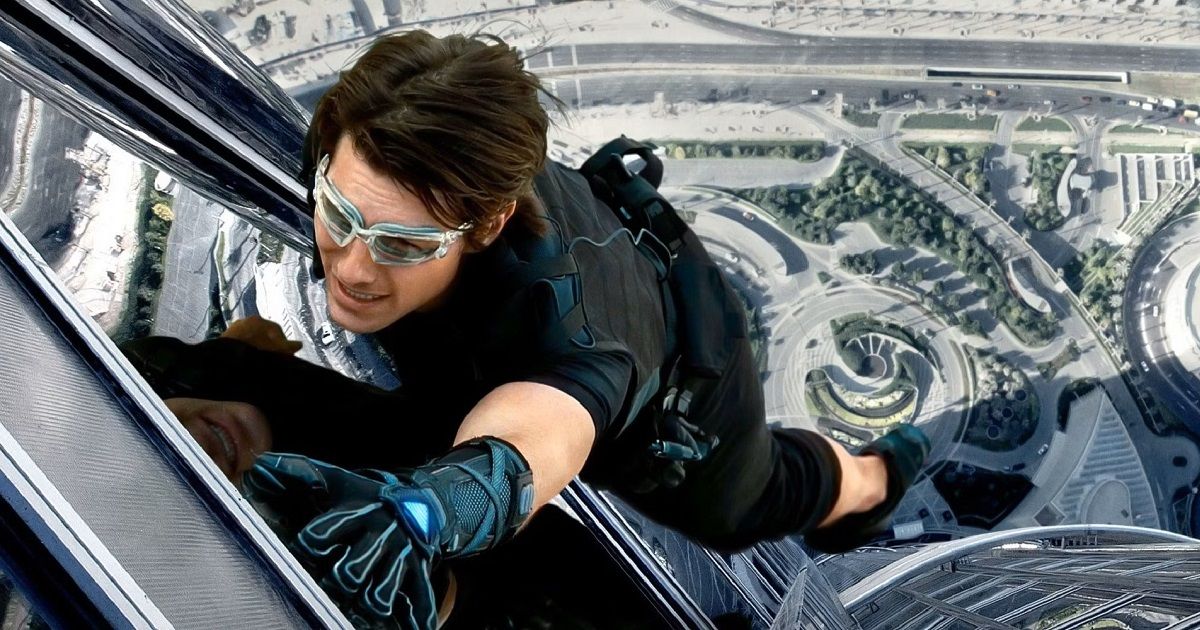Summary
- Mission: Impossible - Dead Reckoning Part One breaks the mold by portraying technology as an obstacle rather than a solution, forcing characters to rely on improvisation.
- The film challenges the audience to reconsider their dependence on technology in the real world, raising important questions about its impact on society.
- As the story unfolds, the team is forced to abandon their reliable tech devices, highlighting the dangers of a world controlled by advanced AI and the need to value real-time art.
Mission: Impossible - Dead Reckoning Part One reinvents a franchise that always relied heavily on technology with a straightforward critique. In the film, Ethan Hunt and his team go rogue once again in order to gather two valuable keys that, together, have the ability to alter the hierarchy of power on Earth. In a mission where no one can be trusted, characters both old and new try to get their hands on the keys first, including a dangerous figure from Ethan's past.
In the end, it's revealed that the keys open the Entity's chamber located on a sunken submarine. The Entity quickly became one of the best Mission: Impossible villains due to its capacity to locate and disrupt any tech device in the world: it happens to be an AI that evolved on its own and turned against the system, becoming an omnipresent threat that forces Ethan and his team to resort to unexpected measures in order to remain unnoticed.
How Technology Plays a Vital Role in the Mission: Impossible Franchise
Mission: Impossible always navigated between an espionage thriller and a straight-up action flick, altering its style and approach multiple times throughout seven movies, but always remaining faithful to the mythology established by Brian De Palma in the first film. 1996's Mission: Impossible had a great number of the groundbreaking action sequences the franchise would come to be known about, yet the true differentiator was the disruptive technology introduced by De Palma.
Starting with the face masks, the franchise's most distinctive trademark, the convenience it brings to the story is so massive that it could easily backfire. Yet even though it's an element that appears in every single Mission: Impossible movie, it's always crossing a different narrative boundary: it's been used to trick audiences in Mission: Impossible III, as a comical relief in Ghost Protocol, as a way to get closer to the target in Fallout, and so on.
The same applies to the franchise's recurring characters, such as Luther and Benji, who have been developed entirely around their tech expertise. Luther is a hacker and computer specialist, usually assigned to obtaining secret information and dissecting the enemy's objectives, while Benji is a tech engineer responsible to ensure Ethan makes it in and out of all sorts of deadly places alive. While Ethan is the guy that springs to action, he wouldn't have gone this far without the help of his team, although his team merely represents a bridge between man and technology — until now.
In the franchise, technology enables the impossible, something that was always tied to reverence. It's only in Mission: Impossible - Dead Reckoning Part One that the tables turn, and technology becomes an obstacle rather than a life savior. Such a bold narrative choice has much more to do with what's going on outside the screen, in the real world, than with the movie itself.
Why Mission: Impossible - Dead Reckoning Part One Challenges the Audience to Think Twice About Technology
If anything, Mission: Impossible - Dead Reckoning Part One is surprisingly timely, coming out amid the Writer's Guild of America strike and only days before the SAG-AFTRA joined them. The film didn't necessarily predict these events, but, as a product of this time, explores many of the concerns evolving A.I. and offers precious insights on the current debate, forcing the audience to ask themselves: to what extent the world's dependence on technology is healthy? To lay out these concerns, the movie inserts them in Ethan's thrilling journey. In the face of an invisible force of technological nature, the characters are forced to abandon all their most reliable tech devices, lest the Entity will locate them and sabotage them at ease. It feels like a meta-film to its core as characters directly address all the issues that prevent not only the Mission: Impossible franchise but the whole film industry to move forward.
The message that Mission: Impossible - Dead Reckoning Part One conveys through the Entity, a rogue A.I. capable of establishing a new world order, is clear enough, but there's much more to the film's subtext than meets the eye. In the film, Ethan and his team finds themselves out of their comfort zone and are forced to do what they do best: improvise. The technology that was so present in the other films here begins to malfunction; the machine responsible for face masks suddenly breaks down, online communication is corrupted by the Entity, and in a witty blink-and-miss moment, Benji mistrusts his car's autopilot and makes sure to put the seatbelts on. Even characters such as Benji and Luther are forced to leave their tech devices behind and spring into action, as seen in the airport scene.
This chain of unforeseeable events inevitably forces the audience to think twice about technology. The difference between reality and fiction is that in the real world, plenty of new disruptive technologies are being created to solve problems that don't exist. Mission: Impossible's commitment to exposing this dilemma and turn it into a real fight is remarkable. And similar to how Ethan rampages across the seven continents to destroy a technology that shouldn't exist, Tom Cruise endorses the need to value art in real-time. With an undertone of hopelessness, Mission: Impossible - Dead Reckoning Part One discusses how there will be a time when technology will be so advanced that it will become completely obsolete. Frank Herbert made that exact statement with his visionary Dune books, and decades later, an action-packed franchise seems to be taking the reins.
The fight isn't over yet. Given that Ethan and his team will have to find a way to get to the Sevastopol, a submarine sunken at the bottom of the Arctic Ocean, without attracting the Entity's attention, the concerns introduced in Part One were likely just the beginning, and Mission: Impossible will get as practical as ever, distancing itself even further from the disruptive technology that saved Ethan so many times. In contrast, the world locks itself in a vicious cycle in which technology traps each and every one in a spiral of miscommunication and disinformation.



